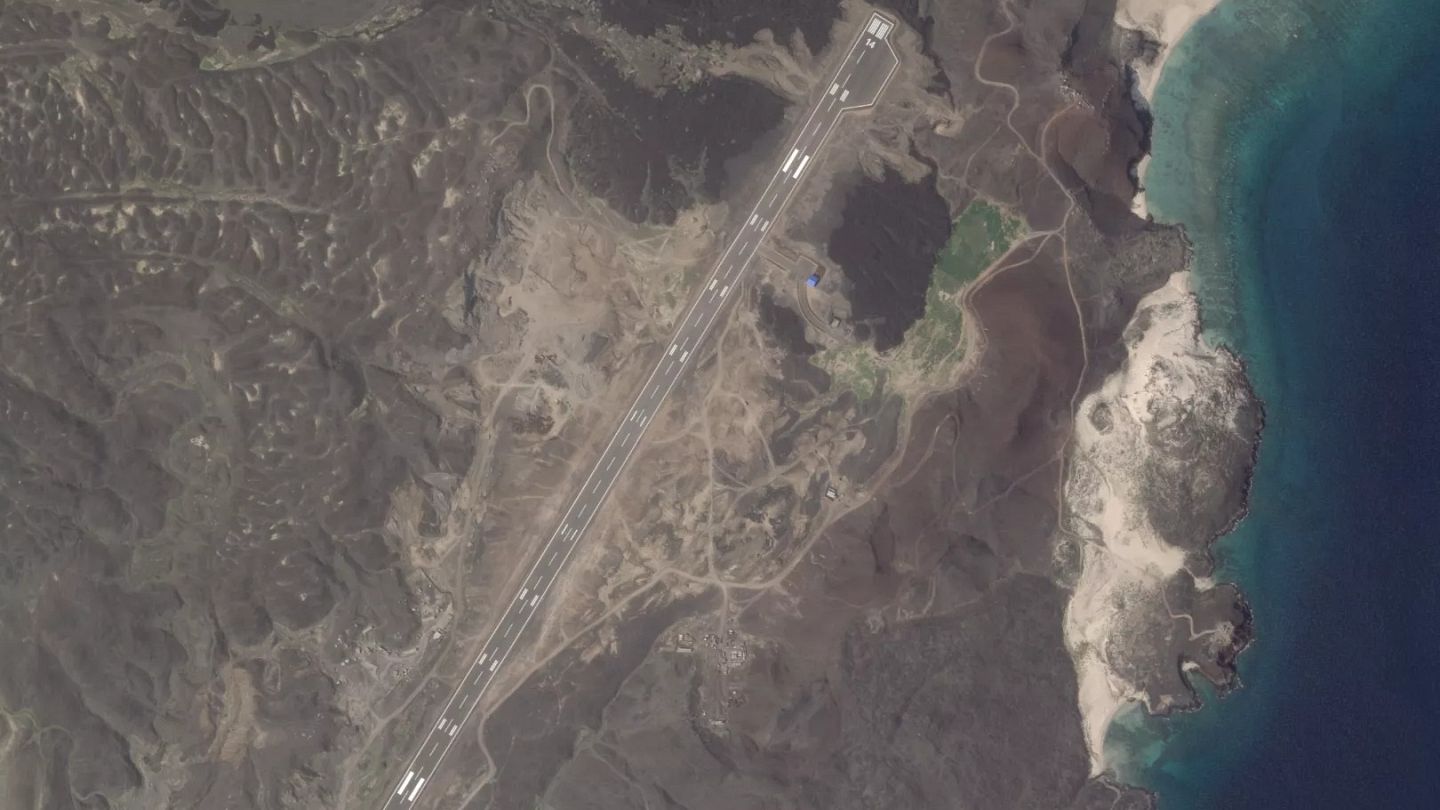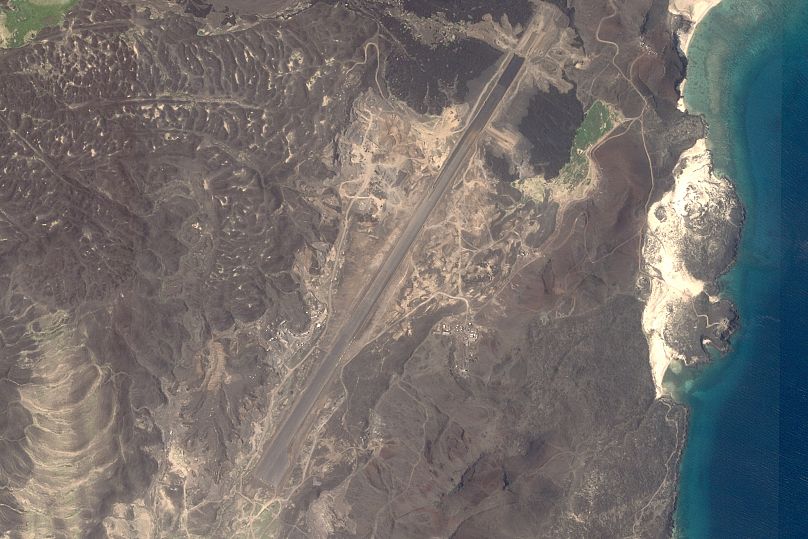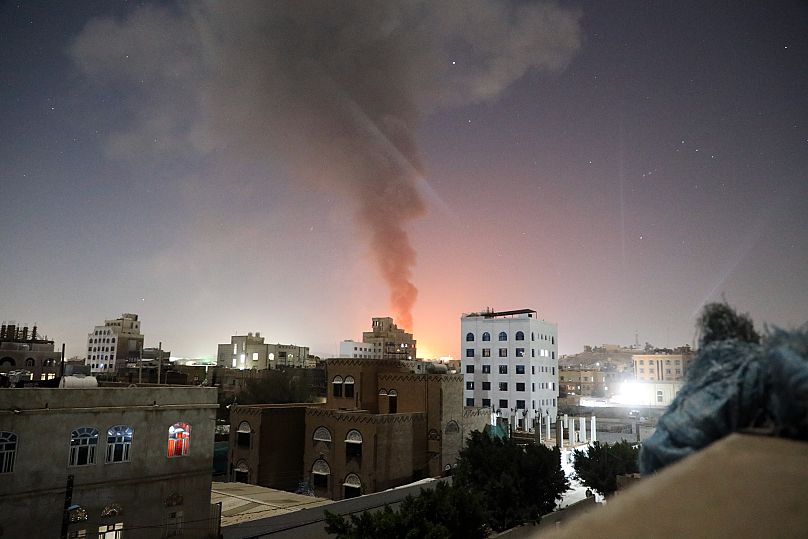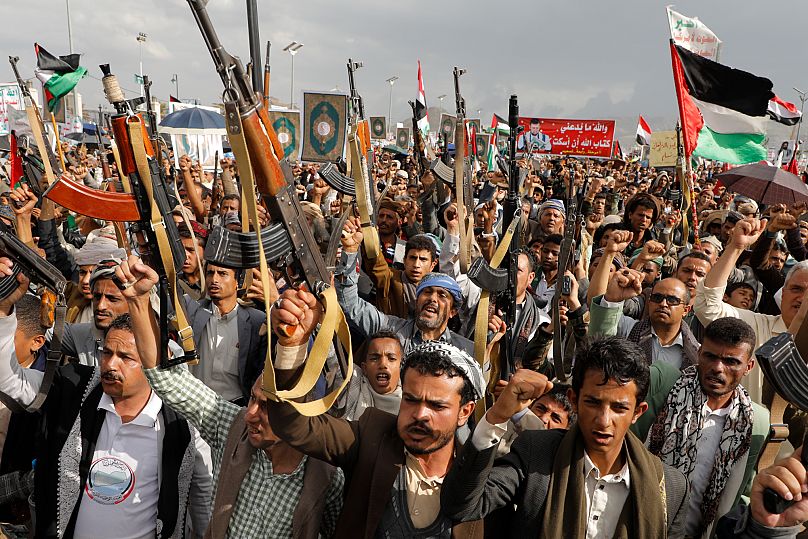
A new airstrip is being built on a volcanic island in the Red Sea off the coast of Yemen, satellite images show, likely the latest project by forces allied to those opposed to the country’s Iranian-backed Houthi rebels.
Satellite photos from Planet Labs PBC show the construction of a nearly 2,000-metre runway on Zuqar Island, which is some 90 kilometres southeast of the Houthi-held port city of Hodeida, a key shipping hub.
The images show work began in April to build out a dock on the island, then land clearing along the site of the runway.
By late August, what appears to be asphalt was being laid across the runway. Images from October show the work continuing, with runway markings painted on in the middle of the month.
No one has claimed the construction. However, ship-tracking data analysed by the AP show the Batsa, a Togolese-flagged bulk carrier registered to a Dubai-based maritime firm, spent nearly a week alongside the new dock at Zuqar Island after coming from Berbera in Somaliland, the site of a DP World port. DP World declined to comment.
A Dubai-based maritime company, Saif Shipping and Marine Services, acknowledged receiving an order to deliver the asphalt to the island, likely used in the airstrip’s construction, on behalf of other UAE-based firms.

Other Emirates-based maritime firms have been associated with other airstrip construction projects in Yemen, later tied back to the UAE.
In Mocha on the Red Sea, a project to extend that city’s airport now allows it to land far larger aircraft. There is also now a runway in nearby Dhubab.
Another runway is on Abd al-Kuri Island, in the Indian Ocean near the mouth of the Gulf of Aden.
And in the Bab el-Mandeb Strait itself, another runway built by the UAW is on Mayun Island.
The Houthis, a militant Islamist group behind a rebellion that pushed out the country’s internationally recognised government, currently control much of western Yemen, including the capital Sana’a.
An anti-Houthi secessionist force in Yemen known as the Southern Transitional Council controls the island and has acknowledged the UAE’s role in building the airport.

The airstrip on Zuqar Island provides yet another link in a network of offshore bases in a region key to international shipping, where the Houthis have already attacked over 100 ships, sunk four vessels and killed at least nine mariners during the Israel-Hamas war in Gaza.
It could give a military force the ability to conduct aerial surveillance over the Red Sea, the Gulf of Aden and the strategic, narrow Bab el-Mandeb Strait connecting the two waterways off East Africa and the Arabian Peninsula.
In recent months, the anti-Houthi forces have been able to intercept more cargo bound for the Houthis, something that having a presence on Zuqar could aid.
“The possibility of a new Yemeni offensive against the Houthis, backed by the Saudi-led coalition, can’t be ruled out, although I don’t see it as approaching,” said Eleonora Ardemagni, a Yemen expert and analyst at the Italian Institute for International Political Studies.
“There’s a more important point in my view regarding the build up in Zuqar: the countering of Houthis’ smuggling activities, with particular regard to weapons.”

Targeting Houthi shipments
Zuqar Island is a strategic location in the Red Sea. Eritrea captured the island in 1995 after battling Yemeni forces. An international court in 1998 placed the island formally into Yemen’s custody.
The island again found itself engulfed by war after the Houthis seized Yemen’s capital, Sanaa, in 2014 and began a march south, when the rebels took Zuqar.

Saudi Arabia and the UAE entered the war in 2015 on behalf of the country’s exiled government, stopping the Houthi advance. They also beat back the Houthis from Zuqar, retaking the island, which has become a staging ground for naval forces loyal to Tariq Saleh, a nephew of Yemen’s late strongman leader Ali Abdullah Saleh.
The younger Saleh, once allied to the Houthis before his uncle switched sides and the rebels killed him in 2017, has been backed by the UAE.
Since then, the front lines of the war have been static for years.
What changed was the Houthis’ taking their campaign globally with attacks on ships in the Red Sea and the Gulf of Aden.
That continued even after a weeks-long campaign of intense airstrikes known as Operation Rough Rider, launched by the United States and continued strikes by Israel, which appear to be getting closer to the Houthis’ top leadership despite the rebels’ penchant for secrecy.
“The Houthis, like any insurgent group, win by not losing,” wrote Gregory D Johnsen, a Yemen expert, in June. “It is how the group has survived and grown from each of its wars.”
While a loose confederation of anti-Houthi groups exists, it remains fragmented and has not launched any attacks during the US airstrikes.
But the growing network of air bases around Yemen comes as anti-Houthi forces have made several significant seizures of weapons, likely bound for the rebels, including one large haul that was praised by the US military’s Central Command.